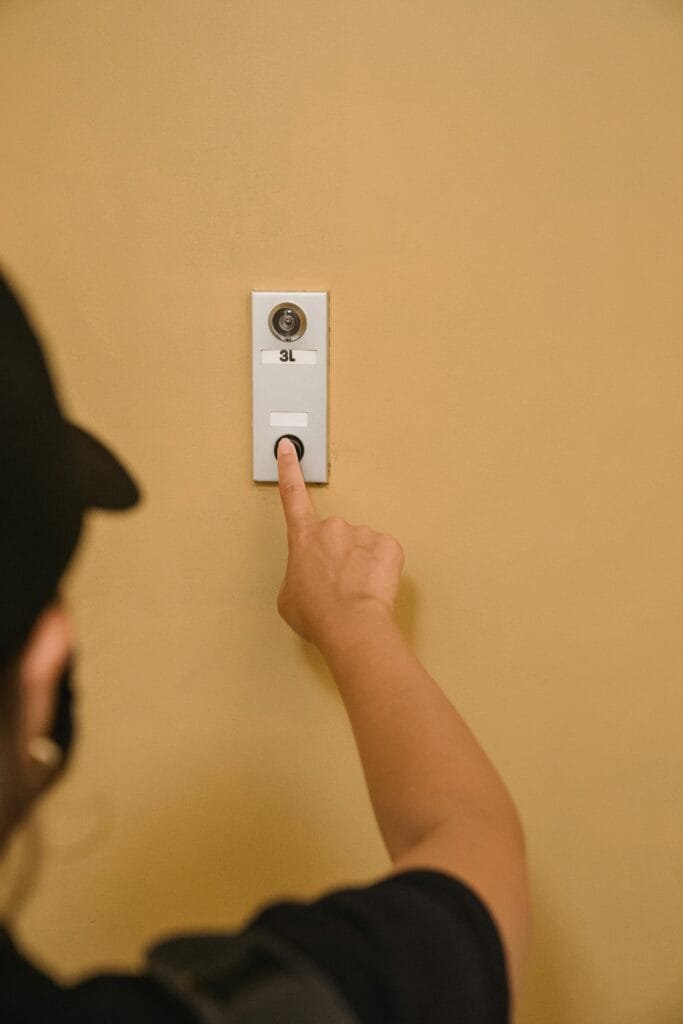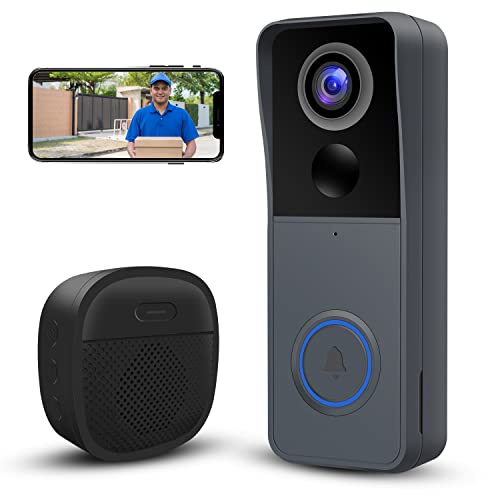
Doorbell Cameras – An Overview
A doorbell camera is a smart device that combines the functionality of a traditional doorbell with modern camera technology, serving as both a notification system and a security measure.
This device is designed to be mounted near the entrance of a home and provides homeowners the ability to view and interact with visitors before opening the door.
A good Home Defence Uk
At the core of a doorbell camera is its integrated camera system, which typically features high-definition video capabilities.
These cameras often have wide-angle lenses that allow for a broader field of view, enabling users to capture everything from the approach of a visitor to the surrounding area.
The technology underlying these devices includes motion detection sensors that trigger video recording when someone is nearby, ensuring that homeowners can monitor activities even when they are not at home.
Most doorbell cameras also come equipped with two-way audio, allowing users to communicate directly with visitors through their smartphones or other connected devices.
This feature is particularly useful for expressing instructions to delivery personnel or addressing unexpected visitors without opening the door.
Furthermore, many models offer night vision capabilities, enhancing security during low-light conditions.
The growing popularity of doorbell cameras in the UK can be attributed to their ability to significantly enhance home security.
By providing real-time alerts and recorded footage, these devices offer homeowners peace of mind, knowing they can monitor their front door remotely.
As the market for smart home technology continues to expand, doorbell cameras stand out as a valuable addition to any security system, combining convenience with enhanced safety.
Wireless Doorbell Cameras: Are They a Viable Option?
Wireless doorbell cameras have become increasingly popular among homeowners, thanks to their flexibility and ease of installation.
The primary advantage of a wireless doorbell camera is that it eliminates the need for complicated wiring, allowing homeowners to install the device without professional assistance.
This feature makes it particularly attractive for those who rent, as it reduces the risk of altering infrastructure in a property that is not owned.
Wireless models are often equipped with battery-powered options, enabling users to place their cameras virtually anywhere around their entryway without being constrained by power outlets.
Another notable benefit of wireless doorbell cameras is the convenience they offer in terms of remote access and monitoring.
Many models connect to home Wi-Fi networks, allowing users to receive real-time notifications on their smartphones whenever someone approaches their door.
This feature is particularly useful for users who are away from home, as they can monitor their property from anywhere, enhancing both security and peace of mind.
However, there are concerns that potential buyers may need to consider before opting for a wireless doorbell camera.
Connectivity issues can arise if the camera’s signal is obstructed by walls, large objects, or distance from the router, potentially compromising its functionality.
Additionally, being reliant on Wi-Fi makes these devices susceptible to hacking or unauthorized access if adequate security measures are not in place.
In contrast, wired doorbell cameras generally provide a more stable connection and may offer superior image quality.
Ultimately, the decision between a wired and a wireless doorbell camera will depend on individual preferences and needs.
Those who prioritize flexibility and ease of installation may find wireless options more appealing, while others concerned with security and connectivity might lean towards wired models.
Weighing these pros and cons is essential for making an informed choice that aligns with one’s security requirements.
Using Doorbell Cameras: Operation and Recording Practices
Doorbell cameras have revolutionized the way we monitor our homes and communicate with visitors. To optimize their use, the installation process is the first step.
Typically, these devices are mounted at a height of about four feet, ensuring a clear view of visitors. Most doorbell cameras require a standard doorbell wiring connection or can operate on battery power.
Users must follow the manufacturer’s guidelines for installation, which often includes connecting the device to their home’s Wi-Fi network.
A stable connection is essential for seamless operation, enabling remote access to video feeds.
Once installed, users need to download the associated application on their smartphones. This app serves as a central hub for monitoring camera feeds, sending alerts, and configuring settings.
Users should carefully set up their Wi-Fi connection within the app, ensuring their doorbell camera remains linked and functional. Additionally, most modern doorbell cameras provide features such as live video viewing, two-way audio communication, and integration with smart home systems.
Understanding how these features work enhances the overall utility of the doorbell camera.
One common question is whether these devices record continuously or only in response to motion. Many doorbell cameras utilize motion detection technology, which activates recording when movement is detected within a specified range.
Users can adjust settings within the app to customize detection zones and sensitivity levels. It is crucial to consider privacy implications when configuring these settings, as capturing footage of neighbouring properties may lead to concerns.
Best practices suggest regularly reviewing recording settings and notifications to ensure that the device functions effectively while respecting the privacy of others.
An efficient doorbell camera can significantly enhance home security when operated with careful consideration and awareness of its capabilities.
Subscription Plans and Legal Considerations for Doorbell Cameras
As doorbell cameras gain popularity in the UK, understanding their subscription plans and legal implications becomes increasingly important for prospective buyers.
Many doorbell cameras offer subscription services that provide enhanced features, such as cloud storage, advanced motion detection, and video history access.
These plans typically range from monthly to annual subscriptions, and their costs can vary widely depending on the camera’s brand and features.
However, it is essential to note that certain functionalities of doorbell cameras are accessible without a subscription. For instance, live streaming and basic motion alerts may be free, allowing users to enjoy some level of functionality without incurring additional costs.
While subscription plans can enhance the user experience and ensure that critical footage is safely stored, they also raise questions about the necessity of such services.
Some models of doorbell cameras come equipped with local storage options, allowing users to save video recordings onto a memory card or directly on connected devices, thereby eliminating the need for ongoing fees.
Understanding the storage capacity and limitations of each model helps consumers decide if a subscription is a worthy investment or if they can manage without it.
From a legal perspective, using doorbell cameras entails various considerations, particularly in relation to privacy laws. In the UK, individuals must comply with data protection regulations, which stipulate that recording should be conducted in a reasonable manner and should not infringe upon the privacy rights of others.
Users are often advised to limit recording angles to their property and avoid areas where individuals have a reasonable expectation of privacy.
Additionally, it is important to inform visitors that they are being recorded. By adhering to these guidelines, users can ensure they are operating their doorbell cameras legally and ethically, balancing safety with respect for individual privacy rights.





































